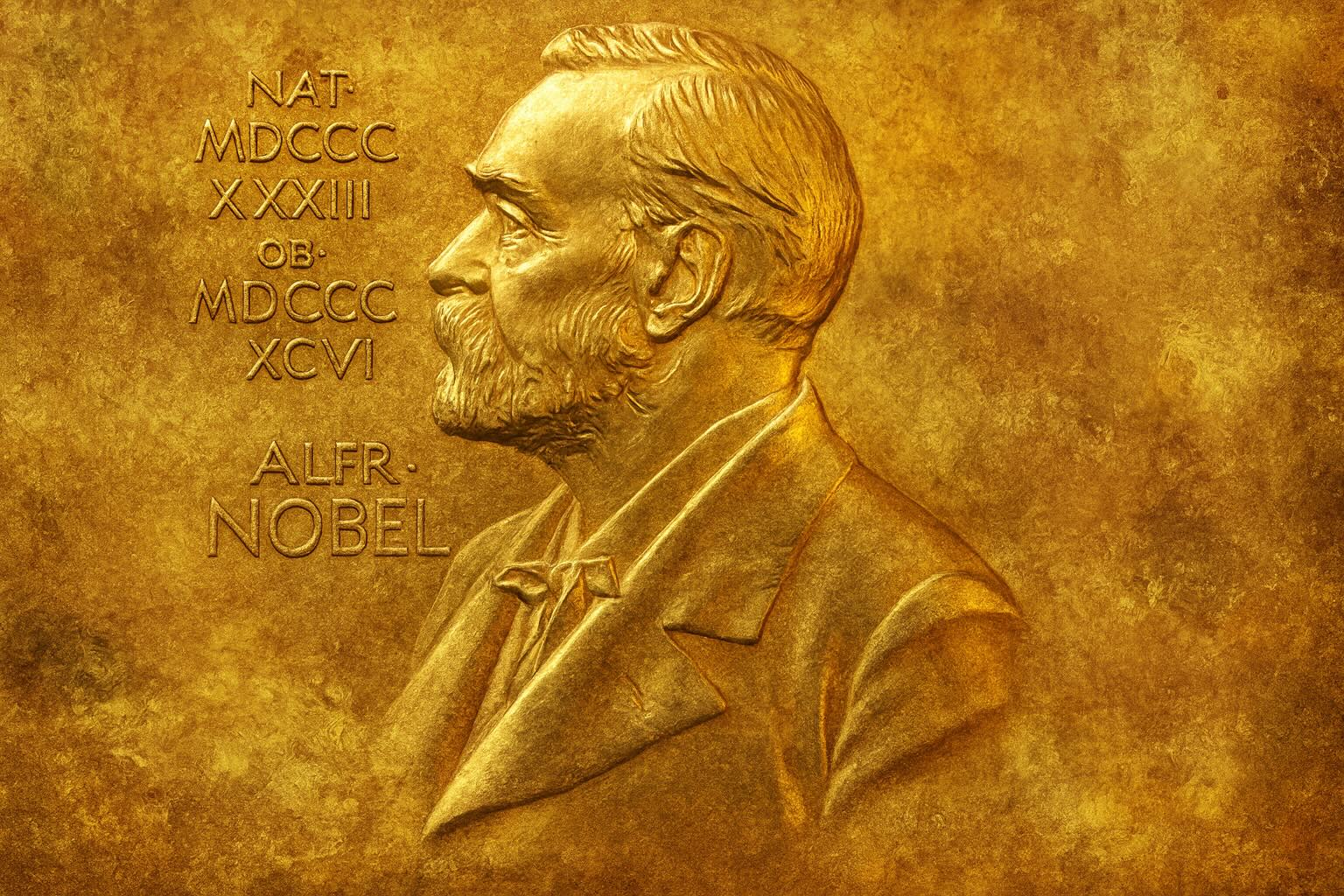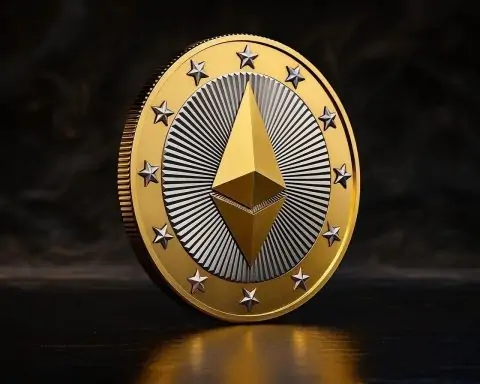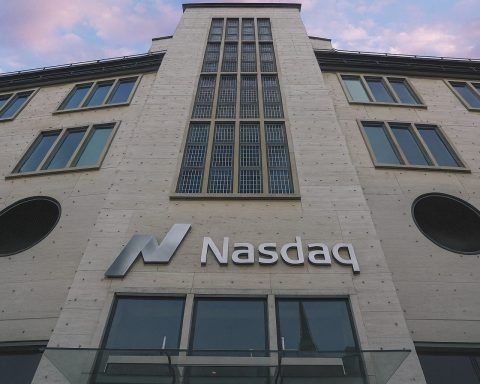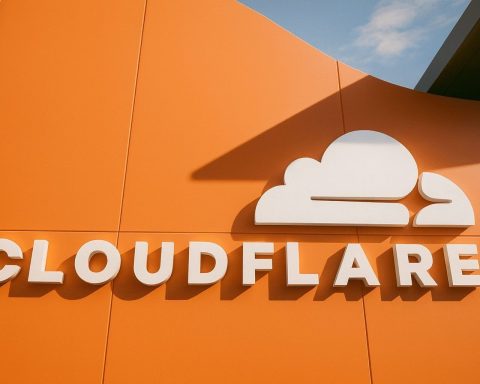- Nobel-Winning Discovery: The 2025 Nobel Prize in Physics was awarded to John Clarke, Michel H. Devoret, and John M. Martinis for demonstrating quantum mechanical tunneling and energy quantization in an electric circuit [1] [2]. In the mid-1980s, their tabletop experiment showed that a small superconducting circuit – something you could hold in your hand – can behave like a single quantum particle, exhibiting “bizarre” quantum effects on a visible scale [3] [4].
- Macroscopic Quantum “Tunneling”: The trio’s circuit was a Josephson junction (two superconductors separated by a thin insulator) through which current flowed with zero voltage, trapped as if behind an energy barrier [5] [6]. Remarkably, the entire circuit (billions of paired electrons acting in unison) “tunneled” through this barrier – akin to a ball passing through a solid wall instead of bouncing off [7] [8]. This macroscopic quantum tunneling produced a measurable voltage where none should exist classically [9].
- Energy in Quanta: The experiment also revealed that the circuit could only absorb or emit energy in specific packets – discrete quantum levels – rather than any arbitrary amount [10] [11]. In other words, it behaved like an “artificial atom,” with quantized energy states, despite being a man-made device much larger than an atom [12]. This was direct evidence that quantum laws (like fixed energy quanta) hold even for human-scale electrical devices [13].
- Why It Matters: This groundbreaking proof that quantum weirdness doesn’t vanish at larger scales has been compared to a real-life Schrödinger’s cat experiment [14]. Nobel Laureate Anthony Leggett noted it showed “the strange behavior of the quantum world doesn’t disappear when you scale up” [15]. The discovery closed the gap between microscopic quantum physics and everyday experience, opening the door to new technologies. As the Nobel Committee emphasized, these findings created “opportunities for developing the next generation of quantum technology, including quantum cryptography, quantum computers, and quantum sensors” [16] [17].
- Pioneers of Quantum Tech: All three laureates went on to drive the field of quantum technology. Martinis, the youngest team member, later used superconducting circuits as qubits – the building blocks of quantum computers – and in 2019 led the team that achieved the first quantum supremacy experiment with a 53-qubit processor [18] [19]. Devoret became a leader in quantum circuit research at Yale, advancing quantum coherence and amplifiers, while Clarke’s precise methods and superconducting sensors at Berkeley laid the groundwork for today’s ultra-sensitive quantum devices [20] [21]. Their combined work transformed a curious physics experiment into the basis of superconducting quantum computing, the approach used by industry frontrunners like IBM and Google (which in 2023 unveiled chips with 1,000+ qubits based on Josephson junction circuits) [22] [23].
Quantum Tunneling, Explained
At the heart of this Nobel-winning discovery is a phenomenon straight out of quantum theory: quantum tunneling. In classical physics, if you throw a ball at a solid wall, it will always bounce back – it doesn’t have enough energy to break through. By analogy, an electron trapped in a low-energy state cannot classically overcome a higher-energy barrier. But quantum mechanics allows for a spooky exception: the particle can sometimes “tunnel” through the barrier and appear on the other side, as if by ghostly permission of probability [24] [25]. This is a well-known microscopic effect – it explains, for instance, how radioactive nuclei decay and how electrons move in a scanning tunneling microscope.
What Clarke, Devoret, and Martinis showed is that such tunneling isn’t limited to single particles – it can happen in a macroscopic object made of an enormous number of particles acting together. In their experiments at UC Berkeley (circa 1984–85), the “particle” was effectively a tiny electric circuit built from superconductors [26] [27]. Superconductors carry electric current with zero resistance, and when two are separated by an ultra-thin insulating layer, they form a Josephson junction – a device known to exhibit quantum behavior (Brian Josephson predicted in 1962 that electron pairs could tunnel between superconductors, earning a 1973 Nobel Prize). The Berkeley team cooled their circuit to near absolute zero, creating a fragile quantum state where all the electrons (paired into Cooper pairs) moved in lockstep as a single quantum system [28] [29].
In this state, the circuit had zero voltage across it – current flowed without resistance in what’s called a “zero-voltage state,” analogous to a ball sitting calmly in a valley separated from a higher valley by a hill [30] [31]. Classically, the current would stay in that state forever unless pushed over the energy “hill” (the junction’s inherent energy barrier). Instead, the researchers observed the hallmark of quantum tunneling: the circuit’s state suddenly changed on its own, as if the system had magically “leaked” through the barrier. A measurable voltage appeared where there had been none, meaning the circuit had spontaneously jumped to a new state [32] [33]. “It was as if the lever moved from off to on, despite the barrier between the two,” the Nobel Prize’s popular description explains, calling this event “macroscopic quantum tunneling.” [34] [35]
The 1980s Experiment That Shocked Physics
When the three physicists first pulled off this experiment, it was quiet revolution in a low-temperature lab. The apparatus did not look spectacular – by all accounts it was a small chip “small enough to fit on a fingertip” [36], sitting inside heavy shielding to block any stray vibrations or magnetic fields [37]. But its implications were profound. John Clarke, a veteran British physicist at Berkeley born in 1942, had long studied superconducting devices (he’s famous for work on SQUID magnetometers, which detect tiny magnetic fields). Known for his meticulous and precise approach, Clarke had a lab where “even the hum of a nearby power line could ruin an experiment” [38]. Into this lab came Michel H. Devoret, a young French scientist (PhD from Paris-Sud, 1982) who joined as a postdoc in the early 1980s [39]. Devoret brought bold ideas from the European tradition of theoretical physics, complementing Clarke’s empirical rigor. The third member, John M. Martinis, was at that time Clarke’s graduate student at Berkeley (Martinis earned his PhD in 1987 from UC Berkeley) [40]. Martinis was the hands-on builder – “the engineer among physicists,” as colleagues would say, who kept tweaking and tuning the circuit until it worked just right [41] [42].
Together, this trio made a perfect team: Clarke’s patience and precision, Devoret’s conceptual creativity, and Martinis’s practical craftsmanship formed a collaboration that bridged generations and cultures [43] [44]. They set out with a simple but daring question: Can a circuit with billions of electrons behave according to the strange laws of quantum mechanics? To find out, they crafted a superconducting loop with a Josephson junction and cooled it to extremely low temperatures. At these temperatures, all the Cooper pairs of electrons condense into a single quantum state that spans the entire circuit [45] [46]. The system was prepared in a metastable condition – like a ball trapped in one of the minima of a “washboard” potential (a common analogy for the Josephson junction energy landscape). In classical physics, the ball would never leave that minimum unless enough energy was added. But in quantum physics, there is a small chance it can tunnel through the barrier.
When Clarke, Devoret, and Martinis measured their circuit, they indeed observed sudden switching events: the zero-voltage state would unpredictably give way to a finite-voltage state even without any classical trigger [47] [48]. This was the signature of macroscopic quantum tunneling (MQT) – the circuit had effectively “snuck through” the energy barrier. In 1985, the team published clear evidence of MQT in a paper that became a landmark in condensed matter physics (their work built on parallel efforts by other groups, but Clarke, Devoret, and Martinis are credited with the definitive experiments and analysis that convinced the scientific community). As the Nobel press release explains, “the system shows its quantum character by managing to escape the zero-voltage state through tunnelling” [49], something extremely surprising in a “device big enough to be held in the hand” [50] [51].
Equally important, they showed that this circuit had quantized energy levels. By carefully energizing the system, the team found the circuit would only accept energy in discrete amounts – quanta – corresponding to transitions between allowed quantum states of the whole circuit [52] [53]. This proved that the electrical circuit was behaving like a giant atom: it had distinct quantum states separated by forbidden gaps, rather than a continuum of possible energies. As the Royal Swedish Academy summed up, “their superconducting electrical system could tunnel from one state to another, as if it were passing straight through a wall. They also showed that the system absorbed and emitted energy in doses of specific sizes, just as predicted by quantum mechanics.” [54] In short, they took two core tenets of quantum physics – tunneling and quantized energies – and demonstrated them in a man-made object visible to the naked eye.
Why This Discovery Matters
This discovery was a watershed for physics. For decades, scientists had debated whether quantum effects would “wash out” in large, everyday objects due to decoherence (interference and interactions that drive systems to classical behavior). The 2025 Nobel laureates showed conclusively that even a complex, many-particle system can exhibit pure quantum behavior if isolated well enough. Physicist Anthony Leggett – a pioneer in the theory of macroscopic quantum phenomena – later compared the Berkeley experiment to bringing Schrödinger’s famous thought experiment to life [55]. Schrödinger’s cat paradox asked whether something as large as a cat could exist in a quantum superposition of alive and dead. Clarke, Devoret, and Martinis didn’t quite make a cat do quantum tricks, but they did make a millimeter-scale electronic device act like a single quantum particle, blurring the line between quantum and classical worlds. “It showed that the strange behavior of the quantum world doesn’t vanish when you scale up,” Leggett noted of their work [56]. This was a profound affirmation of quantum mechanics’ universality.
Beyond its philosophical implications, the achievement turned out to be enormously practical. The Nobel Committee’s chair, Olle Eriksson, praised the work, saying “it is wonderful to celebrate the way century-old quantum mechanics continually offers new surprises. It is also enormously useful, as quantum mechanics is the foundation of all digital technology.” [57] In fact, one could argue that without quantum tunneling, much of modern electronics wouldn’t exist – for example, the semiconductor transistors in every computer chip rely on quantum physics to function [58] [59]. What this Nobel Prize recognizes is not just a one-off oddity, but a breakthrough that allowed physicists to engineer quantum behavior deliberately in a device. This capability underpins the entire field of quantum information science today. The Nobel press statement highlighted that Clarke, Devoret, and Martinis’s experiments opened up possibilities for new technologies such as quantum cryptography, quantum sensors, and quantum computers [60]. In other words, they helped launch the ongoing “second quantum revolution” – the effort to harness weird quantum effects for game-changing applications.
One immediate application of their work was in ultra-sensitive measurements. Since a Josephson junction can tunnel between states, it is exquisitely sensitive to perturbations – a fact that John Clarke exploited in developing SQUIDs (superconducting quantum interference devices) as the world’s most sensitive magnetometers. But perhaps the most spectacular spin-off has been in the realm of quantum computing.
Legacy: From an “Artificial Atom” to Quantum Computers
The Berkeley experiments essentially created an artificial two-level system – a qubit – using a superconducting circuit. Physicists soon realized that if you can control a quantum two-level system, you can use it to encode information as 0s and 1s (or rather, quantum superpositions of 0 and 1). In the decades after the 1985 milestone, researchers like Devoret and Martinis (and others such as Yasunobu Nakamura and Jaw-Shen Tsai in Japan, who in 1999 demonstrated quantum coherent oscillations in a Josephson qubit) built on the discovery to develop full-fledged superconducting qubits. These qubits are essentially tiny Josephson junction circuits that behave like artificial atoms, with quantized energy levels that can represent quantum bits of information.
Martinis in particular carried the torch from fundamental discovery to technological innovation. After his PhD, he continued refining superconducting qubits. By the early 2000s, he had built some of the first high-coherence qubits and demonstrated basic quantum logic operations. In 2014, he joined Google’s Quantum AI Lab, where his expertise culminated in the Sycamore processor – a 53-qubit superconducting chip that famously performed a computation in minutes which would have taken a classical supercomputer thousands of years, a milestone known as quantum supremacy [61] [62]. As a UCSB news report noted, “53 entangled quantum qubits… allowed unprecedented access to quantum computation”, and it was “a crowning achievement of John Martinis’ many-year commitment to building multi-qubit superconducting processors.” [63] [64] This feat, achieved in 2019, directly rested on the principles discovered by the Nobel trio – the idea that superconducting circuits can maintain quantum states and tunnel between them. In fact, each qubit on a chip like Sycamore is essentially a Josephson junction circuit operating as an artificial atom [65].
Meanwhile, Michel Devoret moved to Yale University and, together with colleagues like Robert Schoelkopf, developed the field of circuit quantum electrodynamics (circuit QED) – using superconducting qubits coupled to microwave resonators to read out and control their quantum states. Devoret’s lab achieved record quantum coherence times and invented new devices like the Josephson parametric amplifier (for nearly-noiseless measurement of quantum signals), crucial for scaling up quantum processors. Devoret has been a mentor to many of today’s quantum engineers and continues to push the boundaries of how stable and controllable superconducting quantum systems can be [66] [67].
John Clarke, now an emeritus professor in his 80s, remained at Berkeley and kept contributing to superconductivity and quantum measurement research. His early work on macroscopic tunneling is still cited in cutting-edge studies of quantum coherence. Clarke’s insistence on rigor and “no room for noise” experimentation became a guiding principle for quantum computing labs worldwide [68].
The impact of the trio’s work is evident in the quantum computing industry today. The most advanced quantum computers — like those from IBM and Google — rely on superconducting qubits that are lineal descendants of the Clarke-Devoret-Martinis circuit. These companies have rapidly scaled up the technology: IBM’s latest quantum processor (“Condor”) surpassed 1,121 superconducting qubits in 2023 [69], and their roadmap aims for thousands more on a single chip [70]. Google’s 105-qubit “Willow” chip demonstrated improved error correction in 2024 [71]. In essence, what began as a curious lab experiment is now the basis of a global race to build useful quantum computers. As a Tech Space 2.0 analysis describes, each superconducting qubit is basically a tiny Josephson junction circuit where quantum information is stored in electromagnetic states of current or charge, controlled by microwave pulses [72]. By stringing dozens or hundreds of such qubits together – and thanks to the laureates’ pioneering work in controlling quantum tunneling and coherence – companies are trying to create revolutionary machines for computing tasks that normal computers can’t handle.
The Laureates at a Glance
- John Clarke (age 83) – United Kingdom/United States. Born 1942 in Cambridge, UK, Clarke earned his PhD at Cambridge in 1968 [73]. He joined UC Berkeley soon after and spent his career there as a professor of physics. Clarke is renowned for his work on superconductivity and for inventing ultrasensitive SQUID devices. Described as a quiet perfectionist in the lab [74], he provided the steady hand in the Nobel-winning experiments. Even before this Nobel, Clarke’s contributions earned him accolades like the Hughes Medal. His precise techniques and insistence on shielding experiments from interference were crucial in observing quantum tunneling on a large scale [75] [76].
- Michel H. Devoret (age 72) – France/United States. Born 1953 in Paris, France, Devoret completed his doctorate at the École Normale Supérieure (Paris-Sud University) in 1982 [77]. He came to Berkeley as a postdoc, where his theoretical insight complemented Clarke’s experimental skill. Devoret later became a professor at Yale University (while also collaborating with industry and holding a position at UCSB) [78]. He is a driving force in quantum engineering, co-leading Yale’s Quantum Institute. Devoret’s name is associated with many advances in quantum circuitry, including techniques to prolong qubit coherence and innovate new readout methods. In the 2025 Nobel citation, Devoret is recognized for helping demonstrate that “the bizarre properties of the quantum world can be made concrete” at macroscopic scale [79]. To this day, his Quantum NanoElectronics Lab at Yale explores the frontier of quantum-mechanical electronics.
- John M. Martinis (age 67) – United States. Born 1958 in California, Martinis received his PhD from UC Berkeley in 1987 [80] under John Clarke’s mentorship. As the graduate student in the 1980s experiments, Martinis was the hands-on builder of the Nobel-winning circuit, credited with tirelessly tweaking the setup until quantum effects emerged [81] [82]. He became a professor at University of California, Santa Barbara and is widely regarded as a pioneer of superconducting quantum computing. Martinis’s later career vaulted him into the tech spotlight when he joined Google and led the team that achieved quantum supremacy in 2019 [83] [84]. His “engineering-driven” approach [85] was key to turning quantum theory into working machines. Martinis has won numerous awards (London Prize, NAS’s Comstock Prize, etc.) and now, with the Nobel Prize, is recognized for showing that a simple circuit can unlock a “new era of computing” [86] [87].
Together, Clarke, Devoret, and Martinis represent three generations of physicists who bridged the gap between quantum theory and real-world technology. Their Nobel Prize-winning experiments from 40 years ago are not just historic proof-of-concept tests; they seeded today’s vibrant quantum industry. As one science journalist put it, their work brought “the ghostly rules of quantum mechanics” out of the realm of thought experiments and into practical electrical circuits [88] [89]. In doing so, these laureates have made quantum mechanics tangible and useful on a human scale – truly a quantum leap for science and society.
Sources: Nobel Prize in Physics 2025 Press Release [90] [91] and Popular Information [92] [93]; Reuters News [94]; Hindustan Times [95]; The Economic Times (India) [96] [97]; Tech Space 2.0 (ts2.tech) [98] [99]; UC Santa Barbara news [100] [101].
References
1. www.nobelprize.org, 2. www.nobelprize.org, 3. www.nobelprize.org, 4. www.nobelprize.org, 5. www.nobelprize.org, 6. www.nobelprize.org, 7. www.nobelprize.org, 8. www.nobelprize.org, 9. economictimes.indiatimes.com, 10. www.hindustantimes.com, 11. economictimes.indiatimes.com, 12. economictimes.indiatimes.com, 13. www.hindustantimes.com, 14. economictimes.indiatimes.com, 15. economictimes.indiatimes.com, 16. www.nobelprize.org, 17. www.nobelprize.org, 18. news.ucsb.edu, 19. economictimes.indiatimes.com, 20. economictimes.indiatimes.com, 21. economictimes.indiatimes.com, 22. ts2.tech, 23. economictimes.indiatimes.com, 24. www.nobelprize.org, 25. www.nobelprize.org, 26. www.nobelprize.org, 27. www.nobelprize.org, 28. www.nobelprize.org, 29. www.nobelprize.org, 30. www.nobelprize.org, 31. www.nobelprize.org, 32. www.nobelprize.org, 33. www.nobelprize.org, 34. www.nobelprize.org, 35. www.nobelprize.org, 36. economictimes.indiatimes.com, 37. economictimes.indiatimes.com, 38. economictimes.indiatimes.com, 39. economictimes.indiatimes.com, 40. www.nobelprize.org, 41. economictimes.indiatimes.com, 42. economictimes.indiatimes.com, 43. economictimes.indiatimes.com, 44. economictimes.indiatimes.com, 45. www.nobelprize.org, 46. www.nobelprize.org, 47. www.nobelprize.org, 48. www.nobelprize.org, 49. www.nobelprize.org, 50. www.nobelprize.org, 51. www.nobelprize.org, 52. www.nobelprize.org, 53. www.hindustantimes.com, 54. www.hindustantimes.com, 55. economictimes.indiatimes.com, 56. economictimes.indiatimes.com, 57. www.nobelprize.org, 58. www.nobelprize.org, 59. www.nobelprize.org, 60. www.nobelprize.org, 61. news.ucsb.edu, 62. news.ucsb.edu, 63. news.ucsb.edu, 64. news.ucsb.edu, 65. news.ucsb.edu, 66. economictimes.indiatimes.com, 67. economictimes.indiatimes.com, 68. economictimes.indiatimes.com, 69. ts2.tech, 70. ts2.tech, 71. ts2.tech, 72. ts2.tech, 73. www.nobelprize.org, 74. economictimes.indiatimes.com, 75. economictimes.indiatimes.com, 76. economictimes.indiatimes.com, 77. www.nobelprize.org, 78. www.nobelprize.org, 79. www.nobelprize.org, 80. www.nobelprize.org, 81. economictimes.indiatimes.com, 82. economictimes.indiatimes.com, 83. news.ucsb.edu, 84. news.ucsb.edu, 85. economictimes.indiatimes.com, 86. news.ucsb.edu, 87. news.ucsb.edu, 88. economictimes.indiatimes.com, 89. economictimes.indiatimes.com, 90. www.nobelprize.org, 91. www.nobelprize.org, 92. www.nobelprize.org, 93. www.nobelprize.org, 94. www.reuters.com, 95. www.hindustantimes.com, 96. economictimes.indiatimes.com, 97. economictimes.indiatimes.com, 98. ts2.tech, 99. ts2.tech, 100. news.ucsb.edu, 101. news.ucsb.edu










